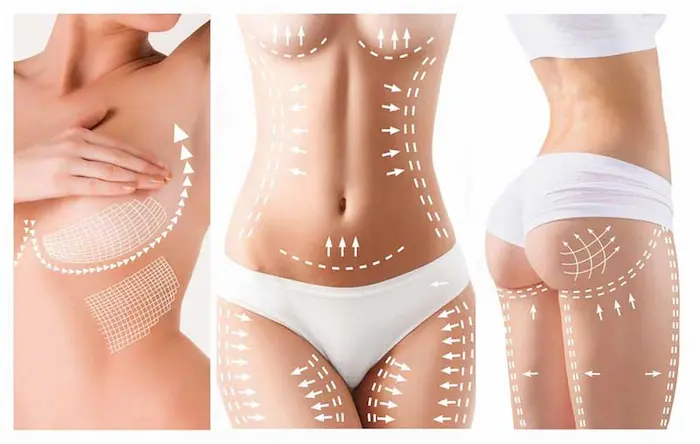
Understanding Upper and Lower Body Lift Differences
Plastic surgery has become increasingly popular in recent years, with individuals seeking various procedures to enhance their appearance and boost their self-confidence.
Plastic surgery has become increasingly popular in recent years, with individuals seeking various procedures to enhance their appearance and boost their self-confidence. Two common procedures that are often considered are the upper body lift and the lower body lifts. While both procedures fall under the category of body contouring, they target different areas of the body and have distinct goals and techniques. In this article, we will explore the key differences between an upper body lift and a lower body lift, including their procedures, recovery processes, and expected outcomes.
Understanding the Upper Body Lift
An upper body lift is a comprehensive surgical procedure designed to address sagging skin and excess tissue in the upper region of the body. This typically includes the chest, back, and arms. The procedure is commonly sought by individuals who have experienced significant weight loss, either through bariatric surgery or lifestyle changes, and are left with loose, hanging skin.
Procedure:
The procedure for an upper body lift involves removing excess skin and fat from the targeted areas. It often begins with an incision along the back, extending from one side to the other. This incision allows the surgeon to lift and tighten the skin and tissue in the back and eliminate the "bra bulge" or rolls that may have formed due to weight loss.
Once the back is addressed, the surgeon moves to the front of the body. Depending on the patient's specific needs, the surgeon might perform additional incisions to address excess skin on the chest and arms. The excess skin is carefully excised, and the remaining skin is tightened and sutured in place.
Recovery:
Recovery from an upper body lift can vary based on the extent of the procedure and the individual's healing capacity. Patients should expect some discomfort, swelling, and bruising in the treated areas. A compression garment is usually worn to aid in reducing swelling and maintaining the new contours of the body. Light activities can typically be resumed within a few weeks, while more strenuous activities should be avoided for a more extended period.
Expected Outcomes:
The primary goal of an upper body lift is to achieve a more toned and youthful appearance by eliminating excess skin and fat. Patients often report increased self-confidence and comfort in their own skin. The results of the upper body lift can be long-lasting, especially if a healthy lifestyle is maintained.
Understanding the Lower Body Lift
A lower body lift is another transformative plastic surgery procedure that focuses on the lower portion of the body, including the abdomen, thighs, and buttocks. Similar to the upper body lift, it is commonly sought by individuals who have lost a significant amount of weight and are dealing with sagging skin and tissue.
Procedure:
The procedure for a lower body lift involves addressing the abdomen, thighs, and buttocks. An incision is made along the beltline, circling the lower portion of the body. This incision allows the surgeon to remove excess skin and fat from the abdomen, lift and tighten the thighs, and enhance the contours of the buttocks.
In some cases, liposuction might be performed in conjunction with a lower body lift to further refine the results and create a smoother overall appearance.
Recovery:
Recovery from a lower body lift is similar to that of an upper body lift, with patients experiencing swelling, bruising, and discomfort in the treated areas. The use of a compression garment is also recommended to aid in healing and contouring. Depending on the extent of the procedure, patients can typically return to light activities within a few weeks.
Expected Outcomes:
The primary goal of a lower body lift is to achieve a more balanced and toned lower body. By addressing multiple areas in one procedure, individuals can attain a more harmonious appearance. The results are often transformative and can significantly boost the individual's self-esteem and body confidence.
Key Differences Between Upper and Lower Body Lifts
Targeted Areas:
Upper Body Lift: Focuses on the chest, back, and arms.
Lower Body Lift: Addresses the abdomen, thighs, and buttocks.
Incision Patterns:
Upper Body Lift: Typically involves an incision along the back and possibly additional incisions on the arms or chest.
Lower Body Lift: Requires an incision along the lower body's beltline.
Areas Addressed:
Upper Body Lift: Eliminates "bra bulge," tightens loose skin on the arms, and lifts the chest area.
Lower Body Lift: Targets excess skin and fat in the abdominal area, lifts and tightens the thighs, and enhances the buttocks.
Procedure Extent:
Upper Body Lift: Can vary based on the individual's needs, but generally focuses on the upper back and arms.
Lower Body Lift: Involves a more comprehensive approach, addressing multiple areas in the lower body.
Overall Result:
Upper Body Lift: Aims to provide a more youthful and toned appearance in the upper body.
Lower Body Lift: Creates a balanced and contoured lower body silhouette.
Here are some more specifications to understand the difference between these two procedures more accurately:
1.Benefits and Considerations
Discuss the potential benefits and considerations of each procedure. For example, highlight the specific aesthetic improvements each procedure offers, such as eliminating excess skin, tightening sagging areas, and enhancing body contours. Also, mention the importance of realistic expectations and the need for proper consultation with a plastic surgeon to determine the most suitable procedure based on the individual's goals and medical history.
2.Candidate Profiles
Provide insights into who might be a suitable candidate for an upper body lift versus a lower body lift. Discuss factors like weight loss history, body shape, skin elasticity, and personal goals. This information can help readers identify which procedure aligns better with their needs.
3.Recovery and Downtime
Expand on the recovery process for both procedures. Describe the typical timeline for returning to various levels of physical activity, potential discomfort, and the importance of adhering to the surgeon's post-operative instructions. This will give readers a clearer idea of what to expect during their recovery period.
4.Combining Procedures
Touch on the possibility of combining upper and lower body lifts, particularly for individuals who desire comprehensive body contouring. Explain how these combined procedures might be performed and the potential benefits they offer in terms of reduced overall downtime and enhanced results.
5.Surgical Techniques and Advances
Briefly mention any innovative techniques or technological advancements in upper and lower body lift surgeries. This could include the use of minimally invasive techniques, improved suture materials, or the incorporation of liposuction to further refine results.
6.Patient Testimonials
Incorporate real-life stories or testimonials from individuals who have undergone either an upper or lower body lift. This can add a personal touch to the article and help readers connect with the experiences and emotions of those who have undergone these procedures.
7.Cost and Financing
Provide a general overview of the cost factors associated with upper and lower body lift surgeries. Mention that costs can vary based on factors such as the extent of the procedure, geographical location, and the surgeon's experience. Discuss the potential availability of financing options for those who are interested in these surgeries.
8.Risks and Complications
In a balanced manner, address potential risks and complications associated with both upper and lower body lifts. While these procedures are generally safe when performed by experienced surgeons, it's important to provide readers with a well-rounded view of what to expect, including rare complications.
9. Before and After Visuals
If possible, include before-and-after photos of individuals who have undergone upper and lower body lifts. Visuals can greatly enhance readers' understanding of the transformative effects of these procedures.
Conclusion
Both upper body lifts and lower body lifts are transformative plastic surgery procedures that offer significant benefits to individuals who have experienced significant weight loss or are dealing with loose, sagging skin. While the upper body lift focuses on the chest, back, and arms, the lower body lift addresses the abdomen, thighs, and buttocks. The procedures differ in terms of incision patterns, areas addressed, and the extent of surgery. By understanding the differences between these two procedures in terms of its benefits, risks, techniques, and advances individuals can make informed decisions about which surgery aligns with their goals and expectations, ultimately leading to improved body confidence and overall well-being. As with any surgical procedure, it's crucial to consult with a qualified plastic surgeon to determine the most suitable approach based on individual needs and preferences. You can do this seamlessly with us by sending an email or whatsapp message through our website.


Comments
Login & Write comment